
Tempering Process
Even though they lost a member, The Temper Trap have managed to expand on their DNA with the help of a cadre of contributors, producer Damian Taylor and their new London studio.

Artist: The Temper Trap
Album: Thick As Thieves
Damian Taylor Portrait: Victoria Dimaano
There were two dots that seemed a bit too easy to connect. One, Lead guitarist Lorenzo Sillitto left The Temper Trap at the end of 2013. Then directly after, the band began work on their latest album Thick As Thieves, and for the first time ever brought in a cast of external co-writers that reads like the credits of a 21st century pop album.
With Lorenzo gone, were they in need of a little songwriting ‘help’?
Guitarist Joseph Greer and bassist Jonathon Aherne understand the intrigue, but aren’t buying it. “Lorenzo leaving marked a point where we had to change things up,” said Joseph. “But it wasn’t necessarily why we started using outside writers.”
“Our writing had been a very insular process, we had some hesitations about extending it out, but ultimately it’s been a good thing,” reflected Jonny — who elevated singer Dougy Mandagi as the central songwriter of the band, not Lorenzo, with his main songwriting partners falling into a seasonal pattern. “Album one, Lorenzo was obviously a big contributor,” continued Jonny. “Album two, Joseph was the second major songwriter. It’s probably me on this one. Our drummer, Toby [Dundas], is also an engineer and has a hand in helping craft them. He wrote some big songs on the first record, like Beta, with Dougy.”
In fact, Jonny says it’s common for other artists on the road to comment, “‘Wow, you’re actually a real band!’ I think it has something to do with the fact we all write and there’s space for everyone’s opinion.”
The co-writing process began incidentally. Dougy had been invited on a writing trip to sit on the opposite side of the table; a co-writer for other artists. He was teamed up with Malay, Frank Ocean’s producer, for a speed date round of writing, and ended up showing him one of the songs the band had already demoed, Summer’s Almost Gone. The pair rearranged parts and changed the outro into a half-time, sub bass section that was apparently quite different to the original. Malay then went back to the band’s studio to work on the song as a producer, and while that production didn’t make the final record, the process was a turning point for the band. “We thought it was awesome, and another way of working,” said Joseph. “It happened quite naturally, not because we needed other writers.”
Once the floodgates opened, the guys got a taste for collaboration and started trialling different collaborators, like stacking two ice cream flavours on a cone. They’d never know if that boysenberry or peppermint was going to complement their choc honeycomb base unless they tried it.
There were a number of songs the band wrote themselves, but the collection of co-writes ended up including Justin Parker (Lana Del Rey, Sia and Bat For Lashes), Ben Allen (Bombay Bicycle Club, Animal Collective, Deerhunter) and Pascal Gabriel (Ladyhawke, Goldfrapp).
It wasn’t always a home run, there were plenty of songs that didn’t make the album. Joseph flew to LA for a writing trip with Dave Stewart, none of which made the cut. The band wrote a song with one of Max Martin’s writers which also didn’t work. “There were a lot of failed experiments,” said Jonny. “Sometimes you lost some of the essence of what Temper Trap is, even with really class writers. A couple of the boys wrote a song with Rivers from Weezer, and it sounded awesome, but it ended up sounding like a Weezer song.”
Overall, the band feel the experience has made them better writers, not less active ones. “It was always a learning experience,” said Jonny. “Even having a conversation with someone and dicovering how they see the world.”
Jonny described it as a tempering process, where plenty of great songs fell by the wayside because they didn’t feel like the band’s song: “It’s a two-edged sword. Some people might say, ‘that’s not Temper Trap’. But we get who this band is; it’s our DNA. It’s like clothes, you can suit up or look like a hobo, but you’re still the same person.” The same thing happens with songs written internally, said Jonny: “You might love what Dougy’s playing on acoustic guitar, but the song doesn’t see the light of day because you don’t get the right riffs around it.”
CHANGE OF LEAD
Of all the ways the band had to adapt to Lorenzo’s departure, the biggest lot fell on Joseph. He’d played rhythm guitar parts before Lorenzo left, but had primarily been a keys player. Now he was The Temper Trap’s lead guitarist. He took up a practise regime only a conservatory graduate would identify with — eight hours a day, every single day. It’s what you have to do when one of your first gigs is to a crowd of 150,000+ at Lollapalooza. “I remember feeling absolutely terrified when we played the first shows as a four-piece,” he said. “Getting through it felt amazing.”
The album opens with a chorus-laden guitar upstroke into a heavy, low driving riff that propels the title track. It sounds like the statement piece of a guitarist confident in his new skin. The other single Fall Together is much more dancey, driven along by a pumping sidechained bass and staccato synth arpeggios. The entire album fits between guitar-driven and programming-heavy songs, but the common element is the band’s uncanny ability to deliver anthems. More than any style, that’s the real DNA of The Temper Trap.


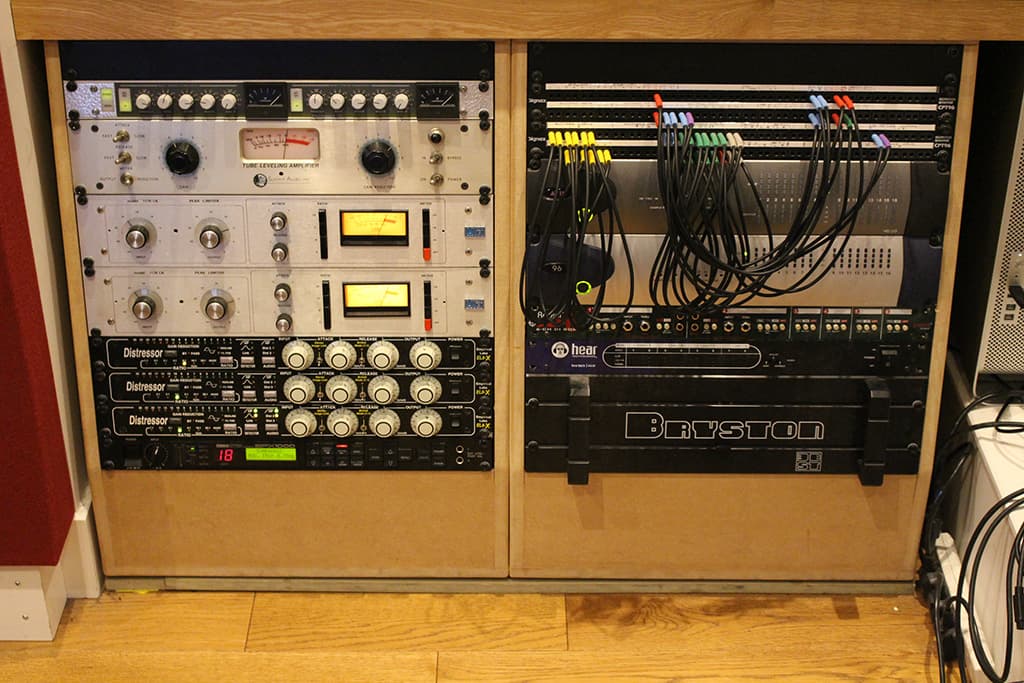
MONITORING SETUP — The gear installed at The Temper Trap’s studio is a mix of Fawcus’ equipment and new gear bought by the band. A new Pro Tools HD Native system with HD I/O conversion is strapped to Fawcus’ Mac Pro. The original plan was to lug a console and tape machine up to the top floor, but the cost of fixing up the desk and installing it was going to be too much. It ended up being a blessing in disguise. “We had to move between things really quickly, because of the way the studio worked,” said Fawcus. “It would have been a real headache.”
Fawcus brought in his set of KRK 9000s, some NS10M studios and a Bryston amp for monitoring. “Gary from Focal brought in some SM9s, which were epic, but probably a little too big for our room,” said Fawcus. “We tried a Coleman speaker switcher for a while, and then changed it over to a Dangerous Monitor SP.” The sleeper addition was a pair of M-Audio DSM2 monitors. Fawcus: “I’d used them at Alan Moulder’s Assault & Battery studio a few years ago and liked them. I wanted to have a pair of powered speakers that could be turned up really loud for tracking and it wouldn’t be the end of the world if a driver blew. Up until then we’d been using the 9000s, which they don’t make drivers for anymore. The DSM2s were really useful for a lot of different stuff, mixing, all sorts — a surprise package.”
OUTBOARD — When the console didn’t work out, aside from monitoring systems, patch bays and cabling, the band had to buy a whole collection of preamps and outboard. Fawcus: “It was predominantly API mic pres and EQs. We had 10 modern 512 preamps, one of those API 3124+ quad pre boxes and I got a couple of old ’80s API 312 mic pres that Brent Averill racked up. We had a couple of Brent Averill’s 1073s too and got a great deal on a Focusrite ISA115HD. We also had four vintage 550A EQs and a couple of the reissues.”
For compression, the band added a couple of ELI Distressors to the one they already owned, a couple of Urei 1176s, a Summit TLA-100A, Smart Research C2, and a couple of dbx 160XTs.
MINI MISSION CONTROL
Some of the songs were demoed in writing sessions, but many were conceived in The Temper Trap’s new personal studio (see The Studio Build for more). The small dual room studio in the new Tileyard complex is cosy, but just the hub to launch a series of co-write missions from. “Once we got that space,” said Joseph, “that’s when we felt like the album was becoming real.”
“The demos were a good opportunity to try out the space,” said engineer Russell Fawcus, who used the time to learn how different instruments and mic combinations reacted to different sides of the room.
After the demo process, Montreal-based producer Damian Taylor flew over to London to track the bulk of the album in their studio with Fawcus engineering.
Damian had come out of the London studio scene as a programmer, engineer and creative collaborator, leading to a long working relationship with Björk; programming, engineering and occasionally writing or co-producing tracks on Vespertine, Dancer in the Dark, Volta and Biophilia, as well as acting as Björk’s musical director on her 18-month Volta world tour. He became Björk’s technically enabler; programming Max patches that let them write and perform songs with video game controllers and Lemur touchscreens, and incorporating radical inventions like the Reactable and Tenori-on into the live set. He’s also been a silent member of UNKLE, collaborated on two albums by The Prodigy, and produced and mixed much of The Killers’ Battle Born.
Damian keeps an eye out for Australian projects, having strong family ties here, he relishes the chance to visit. He’d emailed Wally de Backer to see if anything was on the boil. Long story short, Gotye and The Temper Trap share the same management, Lunatic Entertainment. After meeting at Osheaga Festival in Montreal, and a trial back in London, Damian got the gig. Funnily, he never set foot on Australian soil the entire project, which was all done in London and Montreal.
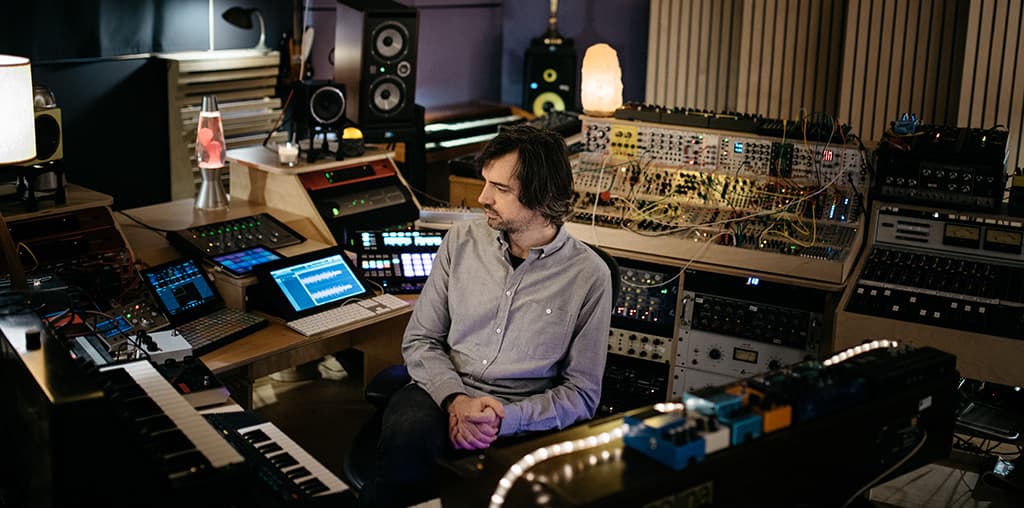
GOLDEN RATIO
Damian has always been on the move. He was born and raised in Canada to British parents, then spent his teenage years in New Zealand where he sold his mountain bike to buy a four-track. “It was the tail end of grunge, which got really formulaic,” said Damian. “Then Drum ’n’ Bass happened, DJ Shadow arrived, and I was exposed to a bunch of mind-blowing music coming out of England.” When he turned 19, he followed the music to London, where he worked in the studio system under a cadre of producers and mixers, including one of the co-writers on the record, Pascal Gabriel. A decade later he moved to Canada; a real estate refugee looking for an affordable place to setup. After a couple of years in an idyllic location an hour north of Vancouver, he eventually settled in Montreal. It was the perfect place to setup his studio, Golden Ratio, custom-built from the slab up with the help of acoustician John Brandt.
It’s in the same time zone as New York and not far from London and LA, putting him at physical distance from the music business without being isolated. “It’s a Berlin situation because it has lots of really cheap warehouse space,” said Damian. “The Quebec separatist movement drove a lot of commercial enterprise to Toronto, opening up Montreal to become and artists’ haven.
“Golden Ratio is built to be as acoustically accurate as anywhere you’d work in London or New York. There’s three rooms; the main control room is 6-700 square feet and and was designed to incorporate up to four live performers in addition to all my electronics and mixing gear.
“Next is a small live room that is very precise, then an echo chamber linking back to the control room. To get a big drum sound, I put mics in the echo chamber and leave the door open to the live room. You get drums that are super precise with close mics, but with an explosive, controllable ambience. It can be more useful than a really big live room, which can get indistinct and washy.”
Of course, most of the album was recorded in the band’s tiny studio in London, but Damian still managed to imprint Golden Ratio’s signature on the record when the sessions moved to Montreal for some final tracking and mixing. He has developed an elaborate reamping system that uses his rooms, pedals and spring reverb to create distinct sounds and a sense of space.
“I’m obsessed with Auratones,” said Damian. “I really like running tracks through them into the live room to get the right depth. Often if you want to get more excitement into a track the midrange area is the place to do it. I’ve got a bunch of generic two-way monitors I’ll sometimes use, but that tends to get a little boring.
“I’ll typically have a couple of close mics on the Auratone, usually an AKG D119 dynamic and a small diaphragm condenser, a more distant mic from the speaker, then a pair of small diaphragm condensers in the echo chamber, only about 11 feet away. I do a huge amount of my mixing work on Auratones too. I switched to Avantones a couple of years ago thinking they’d be more durable, but both my pairs have blown up because I love those speakers really loud!
“I’ll send the dynamic mic through the IRL Audio Big Mouth mic splitter. It splits a mic signal, passing one through beautifully cleanly while the other has a preamp which feeds an effects loop for pedals. I can send sounds from Pro Tools direct to the Auratone then process things through pedals on the way back. Those returns then have sends to a Demeter spring reverb and an old MXR stereo pitch shifter. Sometimes for vocals I might just end up using a Memoryman return through the Big Mouth for a bit of slap. Other times I’ll take the pedal return from the Auratone and send it back out through another speaker to feed delay back into the room and record it all with the echo chamber mics. The drum sound on What If I’m Wrong is a good example of this.”
For the mix of Tombstone, the entire main vocal track was recorded through the Auratone, which wasn’t just a spatial decision. “Dougy’s got a really beautiful voice, but he’s really into making it sound unusual on record,” said Damian. “I’ll usually have around eight effects sends on a vocal, all those as well the direct vocal channels come back through a single bus. So the entirety of the vocal sound will then go through more processing to glue it together. Endless ways to shape it until it sounds right for Dougy.” Other times it’s what suits the lyric. Damian: “In Thick as Thieves the whole guitar amp, telephone type of vocal was really critical to the message and mood of the song, which plays on surveillance state themes.”
SMASHING DRUMS
External processing was a big part of building unique sounds into the album’s texture. Damian reckons almost the entire album’s worth of drums was run out through the Auratone to the echo chamber for extra ambience. Even before the drums got fed into Damian’s matrix, Fawcus had done some sonic mangling of his own back in London. Fawcus: “We had it set up where we could send a combination of drum mics to an old Fender Champ or through a classic Sansamp pedal with the toggle switches. The boys didn’t want it too hi-fi, so we were experimenting with what was otherwise a fairly standard setup.”
With such a small live room, they spent a lot of time tuning the drums to capture the right crunch and bite, often removing everything from the room that wasn’t resonating in sympathy. The biggest asset in the drum recording was Toby, himself an engineer, he was critical to evaluating how different setups responded and how he needed to adapt his playing to them; even playing some songs without cymbals so the distortion and compression wouldn’t mask the kit.
With live drums and electronic instrumentation on every track, Damian said the trick when combining the two was to nudge each in the other’s direction, never forcing one to comply fully with the other. “If you trigger all your electronics purely to the live flow it can sound weird, but if you grid up all your live stuff, then that sounds whack,” said Damian.
Sometimes you lost some of the essence of what Temper Trap is, even with really class writers like Rivers from Weezer. It sounded awesome, but it ended up sounding like a Weezer song

TAKE NOTES
Relieved from engineering detail and free to focus on production, Damian carried a notebook with him to every session. “It’s just really simple, old school stuff,” he explained. A detailed assessment of every performance.
Spending years as a Pro Tools engineer, Damian is adept at editing live performances, but as a producer he focuses on throwing the ball back into the musician’s court. He prefers full takes because “it sounds more like music.” He also finds musicians naturally improve their parts as they play, and it avoids any over cerebral tampering when one part gets too much focus. The notebook is a simple way of logging when they’ve got the right elements to make a comp, and where exactly the best moments lie. “I’ve already mapped out the comp on paper and can reel off a series of edits to Russ,” said Damian. “If Toby was playing drums we’d often have a basic comp ready by the time he took off his headphones and walked back into the room.”
Sometimes if the artist is struggling with a take, he’ll reach for a metaphor to direct energy and intention, avoiding the overthinking that can come with instructions like, ‘You were a bit sharp in bar 13.’
Occasionally a metaphor is drawn out of the mechanics of a part. On one song, Alive, “It became obvious that the bass line was a propeller Jonny was having to spin to drive an airship down a canyon,” said Damian.
Other times it’s just a bit of fun and the product of who Damian has spent his career with. “The studio banter is so good in London. It becomes a game; how much ridiculous stuff can you say? Björk also has really amazing ways of describing music that must have rubbed off on me. It’s meant to be fun at the end of the day, isn’t it?”
“He’s quite the intellect,” reflected Jonny. “His vocabulary and imagination was ridiculous which made his metaphors awesome. You’d try go on his metaphor and do it.
“Other times, it’d just be, let’s go again,” said Joseph. At one point, he recalled Damian trying to get him to run up and down the stairs to shake off a difficult part. When Joseph wouldn’t go, Damian chased him down the stairs trying to tickle him. “There was a split second where I felt I could have lost it,” said Joseph. “It would have been really bad. It was never horrible, he was just pushing us to get our best and I’m glad he did. You don’t look back on it wishing it was easier at the expense of getting the right performances.”
DEMO X-FACTOR
With 38 demos to listen through, the cull was a massive task. Mostly, Damian said, “it’s identifying the indefinable X-factor. I don’t think about it harder than that. I just listen for what moves me, and note when something impedes an emotional response.
“What If I’m Wrong has amazing vocal melodies and an awesome synth part originally programmed by Ben Allen, but the demo didn’t sound like a band. Ben defined a real spirit with his idea and initial production, even though the band and I had to flip it substantially to bring it into their world.”
Pascal Gabriel’s demos were particularly strong and a lot of his synths were kept. While the composition of So Much Sky was spot on, Damian and the band spent a lot of time finding an unusual groove for the song because the demo felt too straight.
Because Pascal’s demos were were intensely limited to make his demos competitive, it became a challenge for Damian and Russell to achieve similar excitement during tracking across the entire frequency spectrum. “The low mids in the demos were mush, but if you played them on a laptop they sounded exciting because all that energy is in the range of those tiny speakers,” said Damian, who largely banned the band from over analysing the demos during recording in order to keep attention focused in the present moment. However, when it came to mixing, there was no preciousness. “I’ll go deep and mix a version,” Damian would tell them. “Then you guys go walk around the city with headphones, live with it for a bit then tell me what you’re feeling; everything’s on the table.”

DRUMS
The drums were typically placed in a corner of the room’s dead side. Depending on the song Russell would add extra room or close mics smashed through compression to add grit and glue it all together. Other than that the drum mic setup was relatively standard he said: “Mostly an AKG D112 on the inside of the kick and an NS10 on the outside. Snare top was a Shure SM57, and the bottom would either be a 57 or an AKG C451E condenser. Hats would be one of those as well and Sennheiser 421s on toms. Coles 4038 ribbons for overheads, a Neumann UM57 valve condenser as a mono overhead, and another as a mono room.”

BASS
Jonny plays a Marshall VBA400 head and cab, which “can sound really deep but has the right amount of treble and presence to cut through.” He simultaneously uses both the P Bass and Jazz bass pickups on his guitar, and it was DI’d pre and post-pedals with Avalon U5 DIs, with an RE20 on the cabinet. Depending on the track, Fawcus used an API or BAE preamp into Distressors.
VOCALS
Russell: “When Dougy was tracking guide vocals with the band he used a Shure SM7 — the same mic he used on the entire Conditions album — into an API pre feeding the Summit. All the vocals were overdubbed using the Neumann UM57. Singing into a valve condenser was new for him. The mic has the original M7 capsule of the U47 with different electronics. That went into a BAE 1073 preamp and 1176 compressor.”
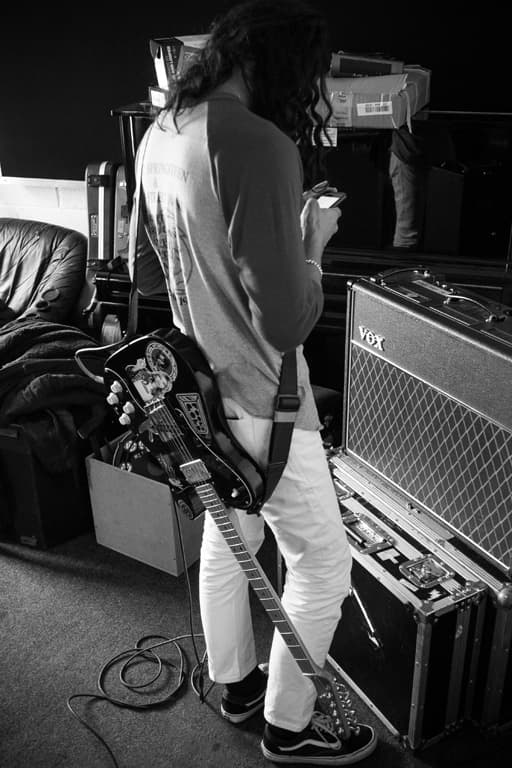
GUITARS
Russell: The guitars were pre-DI’d using an Avalon U5, then DI’d after the pedals too, with an SM57 and Sontronics Delta on the amps. The majority of it was through my ’70s Marshall JMP combo.
Joseph: “Up until that point I’d always been using a Vox AC30. The JMP sound had always been something I’d wanted but didn’t know it; it’s warm and sounds enormous to me. Going back the AC30 just feels a bit too glassy and toppy. Generally I’d set the Marshall to break up slightly, then get the rest of the drive from pedals.
“I had a ridiculous array of pedals, but we tried to keep it simple. A nice overdrive sound from a J Rockett Archer, which is a clone of a Klon Centaur overdrive that people pay thousands of dollars for. Nothing crazy, mostly a nice Strymon delay, because we’ve over processed guitars in the past.”
MIXING WITH INSTINCT
After recording the bulk of the album with Damian, the band also tracked two songs, Lost and Fall Together with Rich Cooper at Snap Studios in London. In the end, Spike Stent mixed a few songs, Damian mixed the majority of the album, and Justin Parker mixed a track.
Damian is a big believer in mixing fast with instinct. First, he simplifies. “We used modern techniques like recording four mics on two guitar amps, so pre-mix I would bounce down and strip out unnecessary layers.”
From there he’d build up extra background material. On Burn he used his modular synth to create noise and sweeps, “the headphone-listening subtle stuff that gives you a sense of fluidity through the track.”
After that, lots of parts go through his Auratone and Big Mouth matrix to add “an extra layer of live energy. The echo chamber gives you a more 3D effect, and can provide a balance of gelling tracks together but also creating sounds that are distinct.” He prints all his outboard processing so he can mix and do recalls faster.
Coming from the breakbeat sample world, he also heavily treats his drums with a variety of parallel processing and lots of automation. Damian: “I have UAD plug-ins up the wazoo; two Octo and two Quad cards. They’re far and away the best for that analogue vibe where you run something through it and it adds a bit of character. For drums I’ll tend to have straight up processing on individual channels, then pre-fader sends to parallel compression which thickens up individual drums. That parallel compression joins the individual channels into a full kit drum bus which is processed to taste, often extremely. I’ll then take a pre-fader, post effect send from that bus and feed other layers of other parallel processing like Soundtoys’ Devil Loc and UAD Culture Vulture which I’ll ride throughout the song.
“It’s a breakbeat culture influence. I really like getting the drums sounding like one thing as soon as possible. I almost always approach drum recording with the intent that one mic is going to be the main sound of the drums, then mix-wise treating the drums and their effects as a stereo pair.”
Not many elements of Damian’s mixes escaped distortion or parallel buses, especially vocals, the main request from the band being to ‘make the vocals dirtier.’
The dirty diet for vocals consisted of all those previous techniques, Klon Clone overdrive and Memory Man echo pedals, tape emulation, Soundtoys’ Decapitator, UAD’s Vertigo VSM-3, and one of Damian’s personal favourites, the original Digidesign Lo-fi plug-in. “I also find slap echoes really useful for giving a feeling of things being f**ked up without eating into too much harmonic space,” said Damian. “I’m big into delays over reverb; I’ll have one or two slaps going on, then eighth notes, and different lengths of quarter and half notes. They’re all on different faders that get ridden at different points. I also like the mid range of the Demeter spring reverb unit. Sometimes I key gate the spring reverb off the vocal itself so it wouldn’t hang over the end of his phrases.”
Damian brings all his effects returns back into one stereo bus, rather than separate ones. He sees it like the days of tape, where the effects are printed and part of the sound. “I like having that extra layer of processing of all the effects together,” he explained. “I’ll push them in or out together, depending on how they fit in the song.”
Damian brings individual effects returns back into stereo buses along with their sources, rather than separate instrument, vocal and effect buses. He sees it like the days of tape, where the effects are printed and indelibly part of the sound. “I like having that extra layer of control over effects and sources together,” he explained. “I’ll push them in or out together, depending on how they fit in the song.”
He also uses the UAD Fatso on almost all his buses. “Towards the end of the mix, you can bring things forward and paradoxically tighten them up a bit. With dense vocal arrangements tiny amounts of bus compression means the lead and backing vocals push against each other in a nice way. This control is one of the huge advantages of mixing in the box, down to being able to automate the mix bus at different points in the chain. For example, if you have a bridge that’s kicking off, you can open things up, whereas the chorus might love being slammed really hard. If you turn your mix bus up and threshold down, you’ll get things to pump a lot more in sections where you’ve just got bass, drums, vocals and a couple of noises. It tends to sound a lot cooler, but you need the breathing room when everything piles in. I also really got into the UAD Manley Vari-Mu. It moves in a really nice way and has a beautiful way of squishing things together. The wet/dry knob is critical as well.”
At the end of the day, said Joseph, through all the co-writes and sonic mangling, “Opening ourselves up to the possibility of not just doing it one way was really good. If a song’s good it’s good.”



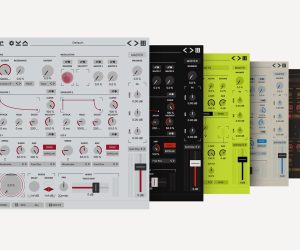
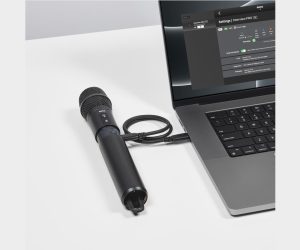
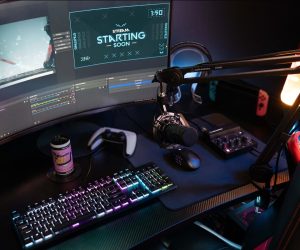
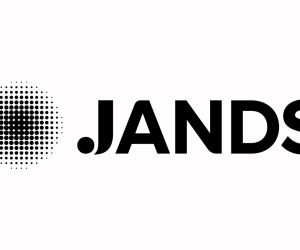
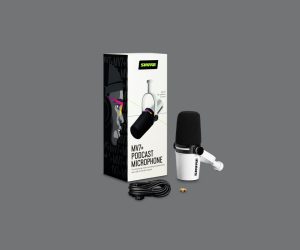
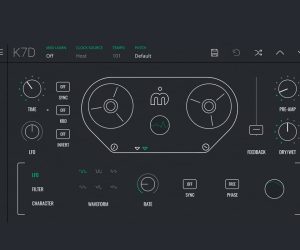
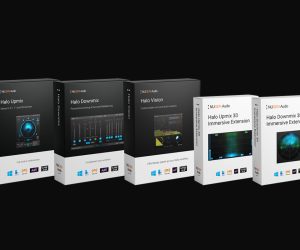
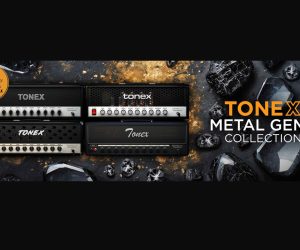

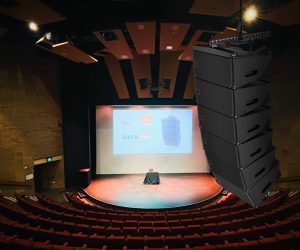




RESPONSES